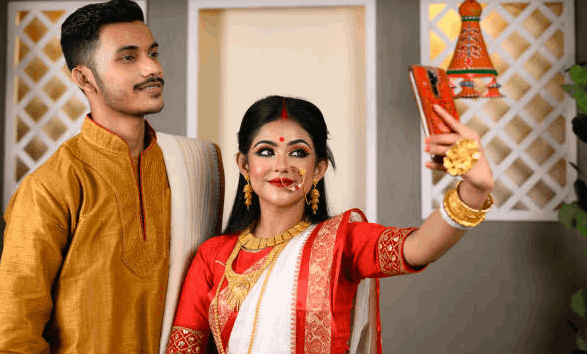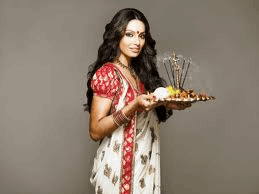West Bengal, a culturally vibrant state in eastern India, is renowned not only for its historical significance and artistic heritage but also for its unique and diverse bengali clothing traditions. The state’s clothing reflects a blend of ancient customs and contemporary influences, showcasing an array of textiles, designs, and techniques that represent its rich cultural tapestry. This article provides an in-depth exploration of West Bengal’s clothing traditions, from historical influences to modern innovations, and how these garments continue to evolve while preserving their traditional essence.
Historical Context of Clothing in West Bengal
Ancient Textiles and Weaving Traditions
The textile history of West Bengal dates back to ancient times, with evidence of sophisticated weaving techniques and textile production in the region. Historical records suggest that Bengal was a significant center for textile trade, known for its fine muslins and silk fabrics. The region’s historical connections with trade routes facilitated the exchange of textile techniques and materials with other parts of India and beyond.
Colonial Influence and Modernization
The colonial period brought about significant changes in West Bengal’s textile industry. The British East India Company’s dominance altered traditional textile production and led to the commercialization of Bengal’s textiles. The introduction of mechanized weaving and the establishment of textile mills in Kolkata (formerly Calcutta) marked a shift towards industrialization in the textile sector. Despite these changes, traditional weaving practices continued to thrive alongside modern developments.
Traditional Clothing of West Bengal
Sarees the Quintessential Bengali Attire
The saree is an iconic garment that holds a special place in bengali clothing traditions. Bengali sarees are known for their intricate designs, rich fabrics, and cultural significance.
- Baluchari Sarees: Originating from the town of Baluchar, these sarees are characterized by their elaborate and often mythological motifs woven into the fabric. The intricate zari work and rich silk material make them suitable for special occasions and traditional ceremonies.
- Murshidabad Silk Sarees: Named after the Murshidabad district, these sarees are celebrated for their fine silk and distinctive patterns. They often feature traditional motifs, including paisleys and floral designs.
- Kantha Embroidery Sarees: Kantha is a traditional form of embroidery from West Bengal, known for its simple yet elegant stitches. Kantha embroidered sarees are prized for their hand-stitched patterns and use of vibrant threads.
Traditional Men’s Wear
Men’s traditional clothing in West Bengal includes several distinctive garments:
- Dhoti: The dhoti is a traditional garment worn by Bengali men, typically made from cotton or silk. It is wrapped around the waist and secured with a knot, and is often paired with a kurta or panjabi for formal occasions.
- Kurta and Panjabi: These are long tunics worn over the dhoti. Kurtas are usually simpler and can be worn casually, while panjabis are more ornate and are often reserved for special occasions.
- Sherwani: For weddings and formal events, Bengali men may opt for a sherwani, a richly embroidered garment that is both elegant and traditional.
Special Occasion Attire
Certain occasions in West Bengal call for special attire:
- Durga Puja: During this major festival, both men and women wear their finest clothes. Women often don new sarees, especially in vibrant colors and intricate designs, while men may wear traditional dhotis and kurtas.
- Weddings: Bengali weddings are characterized by elaborate clothing. Brides typically wear red or maroon sarees with heavy embroidery and jewelry, while grooms don ornate sherwanis or dhotis.

Regional Variations and Unique Textiles
Bengal Handloom Industry
The handloom sector in West Bengal is renowned for its high-quality textiles and intricate craftsmanship. The state’s weaving traditions are upheld by numerous handloom clusters that produce a variety of fabrics.
- Jamdani Weaving: This ancient weaving technique, recognized for its intricate patterns and fine quality, originated in Bengal and continues to be a major textile tradition. Jamdani sarees are known for their translucent fabric and detailed patterns.
- Tant Sarees: Produced primarily in Shantipur and Fulia, Tant sarees are known for their lightness and breathability, making them ideal for everyday wear. They are woven using cotton and often feature simple, elegant designs.
- Moulin Fabric: This is a type of fabric known for its smooth texture and vibrant colors. It is often used for making sarees and other traditional garments.
Textile Centers and Weaving Clusters
West Bengal has several key textile centers known for their unique contributions to the industry:
- Kolkata: The capital city is a major hub for the textile industry, housing numerous weaving units and textile markets. It is known for its silk sarees and elaborate embroidery work.
- Murshidabad: Famous for its silk weaving tradition, Murshidabad is renowned for its silk sarees and intricate patterns.
- Shantipur and Fulia: These towns are known for their handloom production, particularly Tant sarees and traditional cotton fabrics.
Modern Trends and Innovations
Fusion Wear and Contemporary Designs
With the evolving fashion landscape, traditional Bengali clothing has seen a fusion with contemporary styles. Designers are experimenting with traditional fabrics and techniques to create modern, stylish garments.
- Fusion Sarees: Contemporary designers are blending traditional saree designs with modern cuts and fabrics. This includes the use of unconventional materials and innovative draping styles.
- Ethnic Wear for Daily Use: Modern clothing lines are incorporating traditional elements into everyday wear, making ethnic attire more accessible and versatile.
Sustainable and Ethical Fashion
The focus on sustainability has influenced the fashion industry in West Bengal. There is a growing trend towards eco-friendly materials and ethical production practices.
- Organic Cotton: Many weavers and designers are adopting organic cotton for its environmental benefits and sustainability. Organic cotton sarees and garments are becoming increasingly popular.
- Handcrafted Textiles: Emphasizing traditional handcrafts and artisanal techniques, there is a movement towards preserving traditional skills while promoting ethical fashion practices.

Global Recognition and Exports
West Bengal’s textiles are gaining recognition on the global stage. The state’s traditional fabrics and designs are being showcased in international fashion markets, contributing to the growth of the export industry.
- International Fashion Shows: Bengali textiles are being featured in international fashion shows and exhibitions, highlighting their uniqueness and quality.
- Global Market Trends: The demand for traditional Bengali textiles is rising in global markets, leading to increased exports and international collaborations.
Cultural Significance and Preservation
Cultural Heritage
The clothing traditions of West Bengal are deeply intertwined with its cultural heritage. Each garment tells a story of the region’s history, artistry, and social customs.
- Festivals and Rituals: Clothing plays a significant role in festivals and rituals, reflecting the cultural values and traditions of the Bengali people.
- Artisan Communities: The preservation of traditional weaving and textile techniques is vital for maintaining the cultural identity of artisan communities in West Bengal.
Efforts to Preserve Traditional Techniques
There are ongoing efforts to preserve and promote traditional textile techniques and craftsmanship in West Bengal.
- Government Initiatives: Various government schemes and programs support the handloom sector and provide financial assistance to weavers and artisans.
- Non-Governmental Organizations: NGOs and cultural organizations work to promote traditional crafts, provide training, and create markets for handloom products.
- Educational Programs: Institutions and workshops are dedicated to teaching traditional weaving techniques and promoting the significance of Bengali textiles.

Challenges and Opportunities
Challenges Faced by the Textile Industry
The textile industry in West Bengal faces several challenges, including:
- Competition from Machine-Made Fabrics: The rise of machine-made textiles poses a threat to traditional handloom products, affecting their market share.
- Supply Chain Issues: Issues related to raw material supply, production costs, and distribution can impact the profitability and sustainability of traditional textile businesses.
- Changing Fashion Trends: The fast-paced fashion industry can sometimes overshadow traditional clothing, creating challenges for maintaining relevance.
Opportunities for Growth
Despite the challenges, there are numerous opportunities for growth and innovation in West Bengal’s textile industry:
- Technological Integration: Adopting new technologies in weaving and production processes can enhance efficiency and quality.
- Diversification and Innovation: Exploring new designs, materials, and applications for traditional textiles can open up new markets and attract younger consumers.
- Cultural Tourism: Promoting textile heritage as part of cultural tourism can increase awareness and appreciation of West Bengal’s traditional garments.
Conclusion
Bengali clothing traditions offer a rich and diverse tapestry that reflects the state’s cultural heritage and artistic prowess. From ancient weaving techniques to contemporary fashion innovations, the state’s textiles embody a blend of tradition and modernity. As West Bengal continues to evolve in the global fashion landscape, its commitment to preserving traditional crafts while embracing new trends ensures that its clothing heritage remains vibrant and relevant.
The future of West Bengal’s textile industry holds promise, with opportunities for growth, innovation, and global recognition. By addressing challenges and capitalizing on emerging trends, West Bengal can continue to celebrate and showcase its unique clothing traditions, contributing to the rich tapestry of global fashion.
